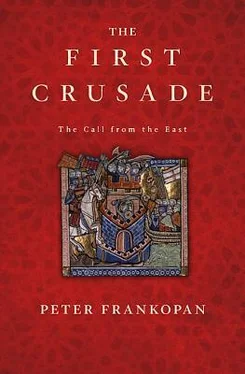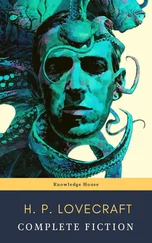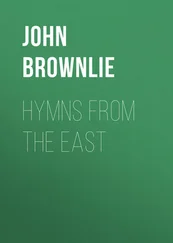Having seen off the attack at Dorylaion, the knights continued their march across central Anatolia. They made rapid progress, meeting little meaningful opposition as the Turks they encountered melted away, rather than daring to engage. As the Crusaders approached Herakleia, on the northern coast of modern Turkey, the enemy fled ‘as quickly as an arrow, shot by a strong hand, flies from the bowstring’. 50The lack of resistance was due to the western knights’ spectacular victory at Dorylaion. As one Arabic writer noted, ‘when news was received of the shameful calamity to the cause of Islam, the anxiety of the people became acute, and their fear and alarm increased’. 51
With Asia Minor opening up to the advancing army, Tatikios made sure that strategically important towns were taken along the way. These were identified in advance: the Byzantine commander therefore led the Crusaders not along the most direct route to the Holy Land, but via a series of locations that were to serve as bases from which further conquests could be launched in future. One such place was the town of Plastencia, east of Caeserea (modern Kayersi) which was recovered in the autumn of 1097. In accordance with the agreements between the Crusaders and the emperor, the town was placed in the hands of an imperial governor, in this case Peter Aliphas, who had taken service with Alexios in the mid-1080s. Now occupying an influential liaison role with the Crusaders, Peter took on the responsibility of securing the town ‘in fealty to God and to the Holy Sepulchre’ – rather than in the name of the emperor, at least according to one commentator. 52
Similar arrangements were put in place to take control of other locations as the Crusader army marched east. A certain Simeon took command of a tract of territory in south-eastern Asia Minor, vowing to protect it from Turkish attack. 53Then there was Welf, a native of Burgundy who had expelled the Turks from Adana and taken control of the town by the time a small Crusade detachment arrived to assess the situation on the southern coast. Like Peter Aliphas, he was a westerner in imperial service who had been reclaiming towns for Byzantium as the Crusade made its way across Asia Minor. 54
Two forays involving Baldwin of Bouillon, the younger brother of Godfrey, and Tancred seem to have had much the same purpose. In the autumn of 1097, Baldwin detached himself from the main body of the expedition and marched into Cilicia, his departure sanctioned by the Crusade leadership. Tancred set off around the same time – but without the same consent. He claimed he had resolved to make his own way to Antioch; in fact, he wanted to see what Baldwin was up to. 55
The two men soon came to blows after they both made for Tarsos, a wealthy and strategically important town on the south-eastern coast of Asia Minor. Tancred arrived first, and thanks to a series of welljudged threats managed to raise his banner over the ramparts without having to launch an attack on the town. Baldwin reached Tarsos soon after and immediately had Tancred’s banner replaced with his own. Antagonism between the two men worsened as Tancred moved on to Adana and then to Mamistra, with Baldwin following close behind. Eventually their forces broke into open battle with Tancred’s surprise attack easily beaten back by Baldwin’s men. 56
It is difficult to interpret this episode; it is usually presented as a case of personal profiteering, a chance for both men to enrich themselves by chasing the opportunities that opened up during the Crusade and then fighting over the spoils. In fact, it is to Constantinople again that we should look for an explanation.
Baldwin had caught the emperor’s eye in the capital, impressing Alexios by chastising the arrogant knight who had dared to sit on the imperial throne. His reprimand is quoted in full in the Alexiad : ‘You ought never to have done such a thing, especially after promising to be the emperor’s liegeman. Roman emperors don’t let their subjects sit with them. That is the custom here and sworn liegemen of His Majesty should observe the customs of the country.’ 57
Alexios was on the lookout for westerners whom he could trust. Even Bohemond, with his blue eyes, smooth face and a reputation that inspired terror in Byzantium, had been carefully considered by the emperor as he looked for commanders to take on responsibilities during the Crusade. Baldwin appeared to fit the mould perfectly. It was no coincidence, therefore, that he was put in command of a force that made for the coast, nor that he advanced on Tarsos and the south-eastern corner of Asia Minor. The capture of the town was a vital precursor for the assault on Antioch, the next focus of the Crusader expedition. It was an important base with a good natural harbour, making it an obvious location from which the Turks might harass the coast of Syria once the westerners arrived, threatening supply lines to Antioch not only from southern Asia Minor, but also from Cyprus. Alexios was already in the process of establishing Cyprus as a primary base from which to provision the Crusaders. Protecting maritime traffic in the eastern Mediterranean was essential if the expedition was to prove successful in Syria. Taking Tarsos and other towns targeted by Baldwin – like Mamistra – was a crucial part of the wider plan to recover Antioch, until recently the most important city in the Byzantine east.
Thus the dispatch of Baldwin to oversee the capture of Tarsos and the towns of its hinterland had nothing to do with profiteering, but was a foray executed under the direction of the emperor. This was the reason why Baldwin’s departure from the main army, which was still being led by Tatikios, was agreed to in the first place. It also explains Baldwin’s determination to drive off Tancred. The latter was a difficult character, headstrong and ambitious. Baldwin’s eventual use of force against him was a necessary step to keep the framework of the expedition intact.
Having secured Tarsos, Adana and other locations in the southwestern corner of Asia Minor, Baldwin handed them over to Tatikios and the Byzantines. This was why, less than six months later, Tatikios was himself able to place the towns under Bohemond’s control when he left the Crusader camp in search of supplies and reinforcements. 58Baldwin had shown himself to be willing to defend Alexios’ interests aggressively, and it was not long before other towns and local populations who were keen to drive out the Turks appealed to him, as the emperor’s representative, for help. After briefly rejoining the main army, Baldwin set off on his second foray, this time into the Caucasus. He was invited to Edessa by its governor T’oros, a Byzantine appointee who had done what he could to defend the town, fighting the Turks ‘with the bravery of a lion’, according to one local source. 59Baldwin was welcomed as a saviour by the region’s inhabitants. ‘When we were passing through the towns of the Armenians’, reported one eyewitness, ‘it was a wonder to see them coming out to greet us, carrying crosses and banners, kissing our feet and our clothes so much did they love God and because they had heard that we were going to protect them against the Turks who had oppressed them for so long.’ 60The joy with which he was greeted must have stemmed from the belief that the emperor was actively trying to protect and secure this region against the Turks, as he had been desperately trying to do immediately before the Crusade, according to the most likely reading of an inscription from the Harran gate in the town. 61It also explains the offer made by the people of Edessa to give Baldwin half the revenues and taxes of the town. This was not intended to line Baldwin’s pockets; these were funds earmarked for the emperor and were being handed to his agent in the traditional fashion. 62
Читать дальше











